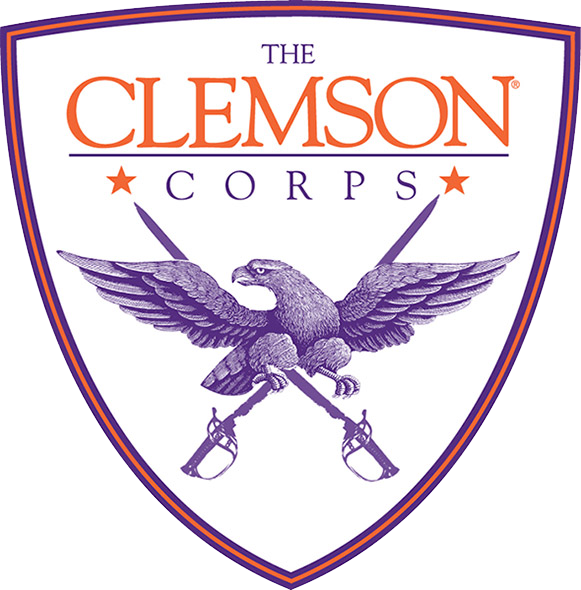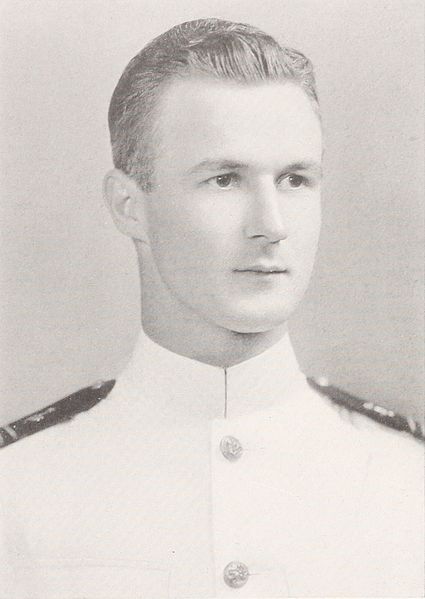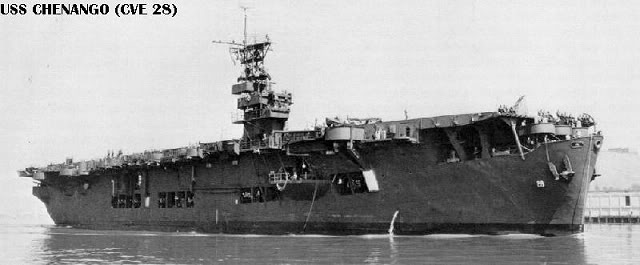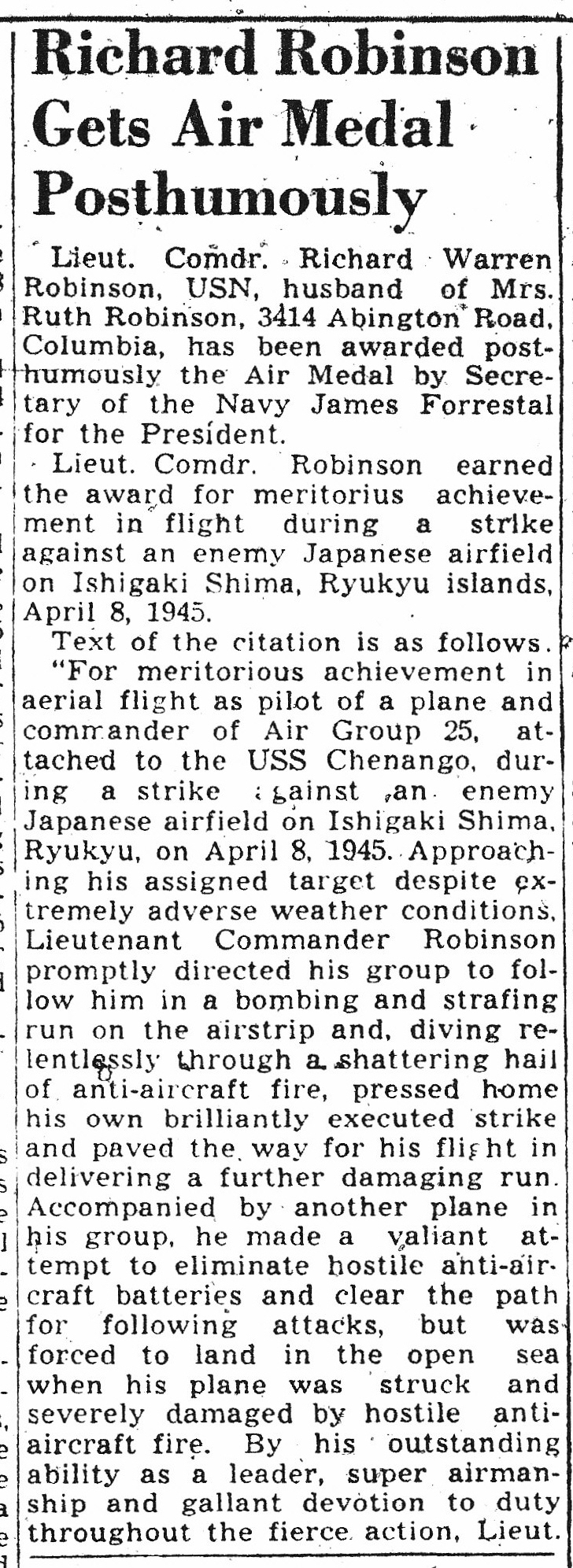
Richard Warren Robinson

1938
General Science
Attended only one semester, in the fall 1934. He did not re-enroll for spring semester 1935 or later.
Anderson, South Carolina
Wife - Ruth Turnbull Robinson
Navy, Lieutenant Commander
Commander, Air Group 25, Serving on the USS Chenango
Purple Heart, Air Medal
Apr 14, 1915
Apr 8, 1945
Killed in Action. Lt Cmdr Robison drowned when he was forced to crash land in the open sea off Ishigaki Shima in the Ryuku Islands after his aircraft was severely damaged by anti-aircraft fire during an attack on a Japanese airfield.
National Memorial Cemetery of the Pacific, Honolulu, Hawaii. Section N, Site 1104
SW
Personal Remembrances
Additional Information
Birth April 15, 1915. Parent G. L. Robinson. Anderson, SC. Attended Anderson Boys High School. Attended Anderson College Sept 1932 to May 1933. Enrolled Clemson Sept 1934. Did not re-enroll for spring semester 1935 or later. Enrolled in the Naval Academy in 1935 and graduated from the Naval Academy in 1939.
Activities of USS Chenango at the time of LCDR Robinson’s death. With Air Group 25 aboard, the ship and squadron rehearsed close support work at Cape Esperence in the Solomons during the first week of March [1945] and got underway on the 27th [March 1945] for the last and longest test of her legendary luck. On 1 April [1945], Easter Sunday, April Fool’s day, and her 6th birthday, CHENANGO covered the Marines who landed on the beaches along Hagushi Anchorage. The next afternoon, at 1617 a CHENANGO torpedo bomber piloted by Ensign J. W. Moody, and bearing his wounded aircrewman, made an emergency landing on Kadena airfield–less than 24 hours after it had been wrested from the Japanese. Here was another first for the CHENANGO. Here was the first carrier plane to land on Japanese home soil.Then, CHENANGO, with carriers of her division, took part in the fake landings along the southern coast of Okinawa. Her pilots bombed, strafed, rocketed and burned away enemy concentrations, supply dumps, airfields and cave entrances wherever they could find them on Okinawa Shima. Everyone wondered when the operations would develop; thus far, the initial landing and the first week of combat had been too easy.The Japanese reaction to the first powerful blows of the fleet and air attacks came suddenly and with great determination. Waves of suicide planes came down from the Northern Ryukus and over from Formosa, pounding away at Allied shipping at Hagushi and Kerama Retto. CHENANGO’s carrier division was assigned the neutralization of six enemy airfields in Sakashima Gunto, three of them on each of the two islands of Miyako and Ishigaki. These airfields were the originating points for Kamikaze planes making dawn and dusk raids on U.S. supply ships at Okinawa. From Rear Admiral W. D. Sample’s flagship came the order: “Keep the airfields cratered so that planes can’t land or take off on them.” And for two months CHENANGO pilots did just that, using 884 tons of high explosives to accomplish their mission. Strikes were made before dawn, during the day, and at dusk in a grueling, unrelenting attempt to crush the fanatical “Divine Wind.” CHENANGO’s only respite came when she refueled and British carriers took her place. In addition, her air group flew daily anti-submarine patrols, mounted offensive strikes in support of ground troops and did excellent photographic coverage of enemy positions from day to day. Extract from : https://www.rfischer.us/history_world_war_ll/



